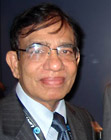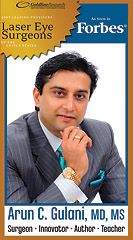
ALCOHOL AND HEALTH: WHAT’S THE STORY? – Part II

Holiday Heart Syndrome
In the early 1970s when I was doing cardiology training at the College of Medicine in Newark, N.J., we used to see a number of patients in the emergency room with heart rhythm irregularities, predominantly Atrial Fibrillation, also called AF and Afib. Some complained of only extra heart beats (or premature beats), but few experienced a special variety called “supraventricular tachycardia” with very fast heart rate. Generally such episodes subsided within a few hours to a day or two after admission. As we started observing those patients further, we found the number of their visits to the ER peaked after holidays such as Christmas, New Year’s Eve, July Fourth or Thanksgiving.
Interestingly, all of them appeared to have been in good health before with no predisposing factors or any history of heart disease including cardiac arrhythmias. A careful questioning revealed one common factor: They all had consumed significant amounts of alcohol during the previous days’ holiday parties. In between holidays, many came to the ER on Mondays, after a weekend of drinking. Most of these arrhythmias resolved without any specific treatment, presumably because the alcohol level in the blood came down after it was cleared by the system. So it was concluded “episodic alcohol usage” could lead to cardiac arrhythmias.
Credit for those observations and subsequent publication of a landmark paper goes to the late Phil Ettinger, M.D., one of my mentors and a professor of cardiology at New Jersey College of Medicine at the time. He coined the catchy title “Holiday Heart Syndrome” in 1978 after a study of 24 patients who drank regularly, but also indulged in binge drinking during holidays or weekends. Now the syndrome is well-recognized and universally accepted.
To further study the effect of alcohol on the heart in light of those observations, our cardiology research team devised a new experiment using healthy medical students as volunteers. They were given two shots of whiskey just one time and after a couple of hours their EKGs and other cardiac parameters were recorded. Needless to say, we had no dearth for volunteers for the study. The conclusion was that such an amount of alcohol was enough to produce cardiac conduction abnormalities and mild depression of the heart muscle. More recently, a Japanese group of researchers found that habitual heavy drinkers (defined as those taking at least two drinks per day for men, 1 drink per day for women as well as recognized alcohol abusers) also have a high risk of AF. They confirmed a linear relationship between alcohol and AF, meaning the more you drink, the bigger your chance for cardiac arrhythmias. Their suggestion: “Not consuming alcohol at all is the most favorable behavior for avoiding AF.”
Why should an otherwise normal heart develop such acute cardiac arrhythmias in the setting of alcohol? Many theories have been proposed including the release of certain stress hormones such as adrenaline and cortisol, a sensitivity to alcohol (which is still considered a toxin) or perhaps dehydration and metabolic abnormalities that can occur with excessive alcohol consumption.
"It's this combination of alcohol and overeating," says Robert Glatter, M.D., an ER physician at Lenox Hill Hospital in New York. People generally overeat and drink when socializing with friends and families. "Patients get so full, and they start to get palpitations. Although it's mainly attributed to alcohol, add to the mix caffeine, excessive amounts of food and lack of sleep, and you have the perfect recipe for cardiac effects,” Glatter said.
According to David Haines, M.D., of the Heart Rhythm Center at Beaumont Hospital in Michigan, "It may be that alcohol has a direct cardiotoxic effect that triggers people into a more sustained atrial fibrillation.” Food also has a well-established link to AF and this is mediated through autonomic nervous stimulation of the heart.
The most common symptom from this condition is a sensation of palpitation – a feeling that heart is racing uncontrollably – sometimes associated with chest discomfort. However, regardless of the cause, the Holiday Heart Syndrome generally resolves once the precipitating event, the binge drinking, stops. But it’s also a warning to quit drinking before the fibrillation gets out of hand. Patients may also need intravenous hydration and correction of metabolic abnormalities, if any. Rarely, drugs like beta blockers will be required to control the heart rate and rhythm.
To be continued next month
M.P. Ravindra Nathan, M.D., is a cardiologist and Emeritus Editor of AAPI Journal. His book “Stories from My Heart” was recently released. (www.amazon.com or www.bn.com.)
Eye Care
LOOK AFTER YOUR EYES THIS MONTH

It’s September, a “Time” to reflect on our Vision!
September is special for me not only because I was born in this month, but also because it is the “Save Your Sight” Month (Eyecare America).
On my return flight after teaching at the World conference for eye surgery held in Dubai two years ago, I saw an inflight movie called “Time.” The movie reinstates the reality that time is the most important currency we have. Also, it can’t be replenished, although the premise of the movie is that one can exchange/trade and even bet their time away in a poker game.
With time and age, of course, comes degeneration of anatomy, and vision is no different. Vision is perhaps the most important and precious of senses that you would like to keep while enjoying a long life, and there are many simple steps that can be taken to ensure a healthy aging eye. Here are some of my suggestions coupled with Eye Care America’s tips:
-
A baseline eye exam to determine your vision status and then to correct what is suboptimal with glasses, contact lenses or advanced Lasik surgeries. My concept is for you to see the best you can – always.
-
Family history of any eye disease -- such as glaucoma, cataracts, diabetes or age-related macular degeneration -- puts you at greater risk of developing those diseases. Be proactive: Ask your family whether anyone has an eye disease and tell them if you do.
-
Protect your eyes from the sun. Spending long hours in the sun without eye protection can damage your eyes by contributing to cataracts, macular degeneration, and growths on the eye like pterygium, including cancer. Remember to wear 99 percent and above UV-absorbent sunglasses and a brimmed hat whenever you are in the sun for long periods of time. Although there are new generation surgeries such as amniotic surgery for pterygium, prevention is the best approach
-
Dry eye incidence does increase with age especially for women. Though there are treatments ranging from high-viscosity artificial tear drops to meibomian gland probing and lacrimal plugs (previous dry eyes column), proactive use of drops can help.
-
As you cross the age of 40, most people will experience presbyopia, the need for reading glasses. There are new surgical laser techniques as well as nonsurgical options such as glasses and contact lenses that can help optimize vision.
-
Because cataracts, glaucoma, and diabetic retinopathy increase in incidence with age, especially if you are 65 years or older, you must pursue a regular eye exam protocol.
-
If diagnosed with cataracts, take advantage of modern laser cataract surgery and new generation lens implants to enable sight at all distances.
-
Age-related macular degeneration and glaucoma, though irreversible in damage, can at least be arrested in most cases from further vision loss with early diagnosis.
Living a long life with poor vision is suboptimal living.
Since “Time” is our most important currency and if we have inherited and/or earned a long life, then let’s make sure we not only preserve but also enhance our vision.
Arun C. Gulani M.D., M.S. is director and chief surgeon of Gulani Vision Institute in Jacksonville. He can be reached at [email protected] or by visiting www.gulanivision.com.